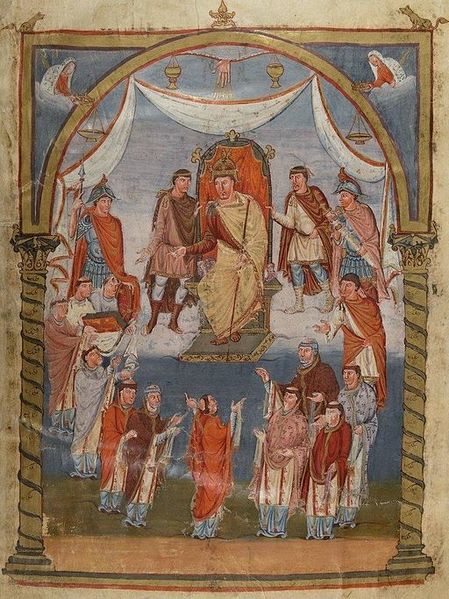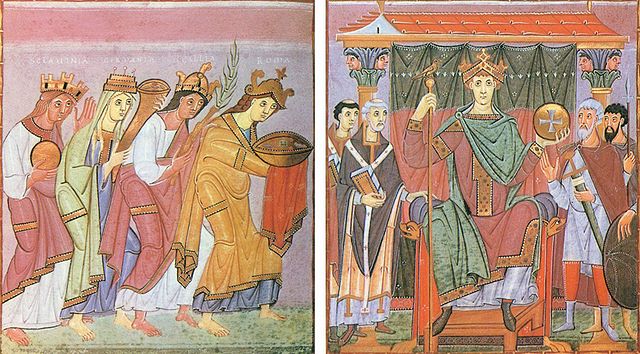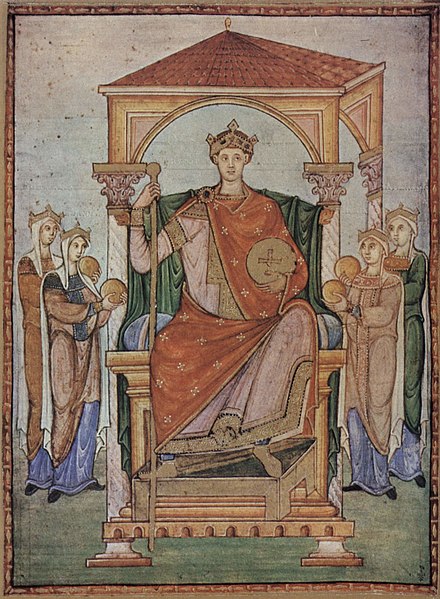A presentation miniature or dedication miniature is a miniature painting often found in illuminated manuscripts, in which the patron or donor is presented with a book, normally to be interpreted as the book containing the miniature itself. The miniature is thus symbolic, and presumably represents an event in the future. Usually it is found at the start of the volume, as a frontispiece before the main text, but may also be placed at the end, as in the Vivian Bible, or at the start of a particular text in a collection.
Rogier van der Weyden, Jean Wauquelin presenting his 'Chroniques de Hainaut' to Philip the Good, c 1448
The patrikia Anicia Juliana receives the Vienna Dioscurides from a putto, flanked by Megalopsychia and Phronesis (folio 6v)
Charles the Bald receives the Vivian Bible from the monks of Tours in 845 (fol. 423)
Two royal visits to respectively the author and translator of Vincent de Beauvais's work translated in French by Jean de Vignay as Le Miroir historial, c. 1333
Ottonian art is a style in pre-romanesque German art, covering also some works from the Low Countries, northern Italy and eastern France. It was named by the art historian Hubert Janitschek after the Ottonian dynasty which ruled Germany and Northern Italy between 919 and 1024 under the kings Henry I, Otto I, Otto II, Otto III and Henry II. With Ottonian architecture, it is a key component of the Ottonian Renaissance. However, the style neither began nor ended to neatly coincide with the rule of the dynasty. It emerged some decades into their rule and persisted past the Ottonian emperors into the reigns of the early Salian dynasty, which lacks an artistic "style label" of its own. In the traditional scheme of art history, Ottonian art follows Carolingian art and precedes Romanesque art, though the transitions at both ends of the period are gradual rather than sudden. Like the former and unlike the latter, it was very largely a style restricted to a few of the small cities of the period, and important monasteries, as well as the court circles of the emperor and his leading vassals.

The Essen cross with large enamels with gems and large senkschmelz enamels, c. 1000
"Roma", "Gallia", "Germania" and "Sclavinia" pay homage to Otto III, from the Munich Gospels of Otto III, one of the "Liuthar group"
Otto II, by the Gregory Master
Apotheosis of Otto III. Liuthar Gospels








